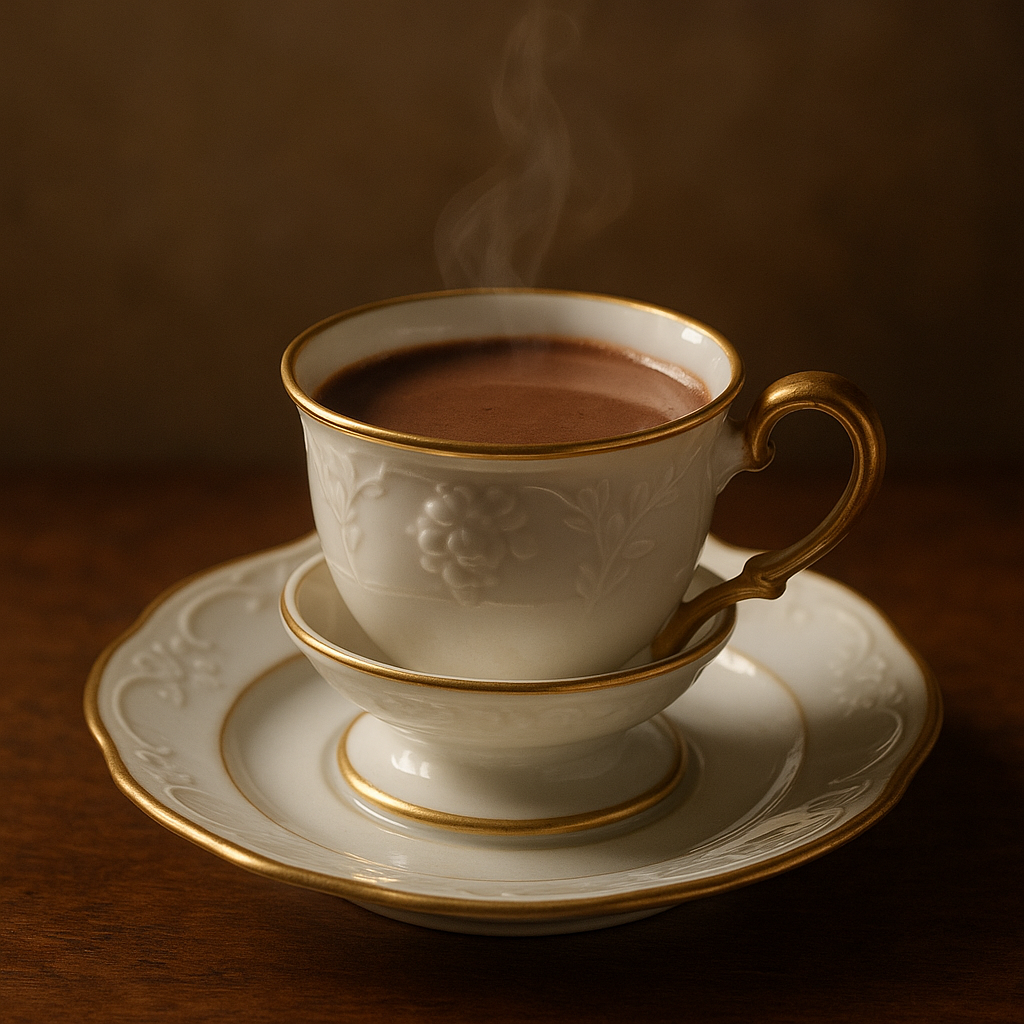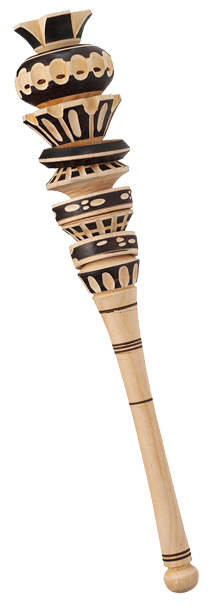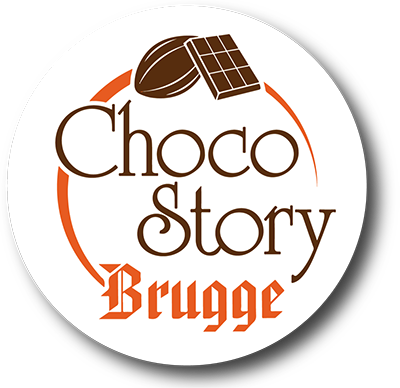The first time I saw the porcelain cup, it stopped me in my tracks.
I was walking through the hushed rooms of Choco-Story Bruges, the old chocolate museum housed in a narrow building that smells faintly of roasting cocoa and warm wood polish.
The air carried that familiar scent a whisper of sugar, spice, and history the fragrance of centuries compressed into glass cabinets. Somewhere behind me, a tour guide’s voice drifted in and out of earshot, explaining how chocolate conquered Europe, how it became the language of luxury and desire, but I wasn’t listening I knew that part.
I was transfixed by a small cup sitting alone in a vitrine of fine porcelain; the word beneath it read trembleuse. Its saucer held a raised rim, a ring that seemed to embrace the cup like a lover’s hand. It looked fragile but confident, as if it knew it belonged to another time. Its purpose, the plaque said, was to steady the cup and prevent spills a refinement suited to breakfast in bed and delicate hands.
That phrase lingered: chocolate in bed. It was decadent and domestic all at once a ritual both intimate and public, equal parts comfort and display. I leaned closer to the glass.for a moment, I imagined it filled again hot, thick chocolate swirling within, steam curling upward, perfumed with cinnamon, orange blossom, and vanilla. The museum air faded away; I was no longer in Bruges, but in an eighteenth-century bedchamber somewhere in France or Spain, where the day began with a sip of cocoa and the rustle of silk.
Chocolate, I realised, has always been a mirror.
How people drank it revealed who they were and what they longed for, it’s easy to forget that Europe didn’t invent chocolate.
The story started its journey much farther away, in the shade of Mesoamerican forests, where the cacao tree grew wild, long before there were porcelain cups and silver trays, there were clay pots and wooden whisks, and chocolate wasn’t sweet at all.
The Olmec, Maya and Aztecs drank it cold or spiced, sometimes with maize or chilli, foamed by pouring between two vessels to summon the gods. It was called xocolatl thought to derive from Nahuatl roots meaning “bitter” and “water,” though scholars still debate the exact origin and it was sacred.
 When Spanish conquistadors brought cacao back to Europe in the sixteenth century, it arrived stripped of ceremony but heavy with mystery.
When Spanish conquistadors brought cacao back to Europe in the sixteenth century, it arrived stripped of ceremony but heavy with mystery.
Priests debated whether it broke the fast; doctors claimed it cured everything from melancholy to fainting fits, the Church never issued one ruling, clerics argued that liquid chocolate did not break the Lenten fast a convenient reasoning that turned piety into pleasure.
By the seventeenth century, chocolate had become the morning fuel of Europe’s upper classes.
It travelled by ship from the Caribbean and South America, often alongside sugar and spices the luxuries of empire, carried on the backs of enslaved labourers and yet, by the time it reached royal lips, all trace of that suffering had been smoothed into porcelain perfection.
In the dim half-light of an aristocrat’s bedroom, the day began like theatre.
Imagine a chamber hung with brocade, the curtains drawn back just enough to let the early light touch the edge of a gilt mirror a servant enters, balancing a silver tray.

The aroma precedes her warm, spicy, faintly floral. She curtsies, places the tray upon the coverlet, and retreats without a word.
The lady of the house stirs, lifts herself against a tower of pillows, her lace nightgown rustling softly the porcelain cup awaits she cradles it in both hands, careful not to stain her linen,
the chocolate is thick, almost velvet in texture, with the faint bitterness of roasted beans beneath the perfume of sugar and spice slowly she drinks, each mouthful a performance of grace.
To sip chocolate in bed was to declare one’s refinement, to say without words: I have the time to taste. In a world obsessed with appearances, the ritual mattered as much as the flavour.
The trembleuse made it possible an invention of both utility and art. Its name, from trembler (“to tremble”), spoke of delicacy and desire.
Whether it was meant for the elderly, the fashionable, or the amorous hardly matters; its real purpose was to turn breakfast into ceremony.
Every porcelain workshop from Meissen to Sèvres produced them, adorned with gilt rims, painted cherubs, or pastoral scenes, a good cup was an heirloom, a small empire of craftsmanship in miniature.
In Spain, a similar design existed long before: the mancerina, named for the Marquis of Mancera, who famously spilled his drink at court. It paired a cup with a saucer ring to steady the hand, because in polite society, spilling chocolate was unthinkable, from these inventions came the culture of the breakfast tray, the silver service, even the modern notion of breakfast in bed.
The deeper I wandered through the museum, the more the objects began to feel alive relics of mornings long past.
 The chocolate pots gleamed like captured firelight. Each had a hole in the lid, meant for the molinillo, a carved wooden whisk that frothed the drink into a cloud. That same tool, still spun between palms in Mexico today, links continents and centuries; pre-Hispanic pouring evolved into colonial whisking, tradition turned into muscle memory.
The chocolate pots gleamed like captured firelight. Each had a hole in the lid, meant for the molinillo, a carved wooden whisk that frothed the drink into a cloud. That same tool, still spun between palms in Mexico today, links continents and centuries; pre-Hispanic pouring evolved into colonial whisking, tradition turned into muscle memory.
Chocolate connected continents long before aeroplanes or Instagram.
A sip in Paris began with a pod cut open in the Caribbean or Venezuela. The sugar came from cane fields worked under a punishing sun.
The porcelain clay was dug from the hills of Saxony; the silver tray mined from Peru, ever cup was a world in miniature beauty balanced on exploitation, luxury resting upon labour.
Yet for those who drank it, chocolate was an awakening a fortification for the body, calming the mind, even kindle desire.
In the court of Louis XIV, fashionable recipes included cocoa mixed with ambergris, a scent prized for its musk and rarity. Marie Antoinette had her personal chocolatier du roi, Sulpice Debauve, prepare hers with almond milk and orange blossom according to later house histories a blend said to soothe the spirit.
Across the Channel, Londoners filled the new chocolate houses, rowdy dens of gossip and gambling where politics were stirred as vigorously as the cocoa.
Standing there in Bruges, surrounded by vitrines of delicate cups and curling scripts, I could almost hear the echo of those centuries.
Chocolate’s journey had taken it from sacred temple to royal boudoir, from the hands of Indigenous farmers to the salons of Europe and always, it carried with it the same contradiction comfort and conquest intertwined.
The more I learn about chocolate, the more I see that it has always been about transformation heat and patience turn beans into drink, but curiosity and culture turn it into story.
Each society remade cocoa in its own image: the Aztecs drank it to speak with gods; the French sipped it to flirt with lovers; the Victorians packaged it for children here I am, centuries later, trying to taste all of them in a single cup.
When I travel, I like to seek out the places where flavour and memory meet the kitchens, markets, and museums where the past still lingers. In Bruges, that meeting happens quietly. the museum sits near the canals, not far from where ships once unloaded cacao destined for the wealthy houses of Europe. I like to imagine the scent that must have hung over the docks: damp burlap, salt air, a hint of spice.
Sometimes, after a tour, I’ll take guests into a quiet corner of the museum café and recreate an eighteenth-century chocolate.
I melt dark couverture gently into almond milk, stir in honey, a pinch of cinnamon, a drop of orange blossom as the steam rises, people lean in; the scent alone tells a story, when they taste it, eyes close, shoulders ease the centuries between then and now dissolve.
It’s in these moments that I feel what I call indulgence with intention the same act that once symbolised wealth can now express awareness of origin, of craft, of connection, when we choose good chocolate, made by hands that are seen and paid fairly, we restore something to the ritual pleasure and conscience need not be enemies; they can share the same cup.
Chocolate’s European story, for all its elegance, was always shadowed by its origins the sugar came from colonised islands; the cacao from enslaved labour yet within that darkness, people adapted, resisted, created. In the Caribbean, enslaved cooks reimagined cocoa as food stirring it into stews, mixing it with cassava and spices, reclaiming nourishment from commodity. In Latin America, the old rituals survived beneath new ones; the molinillo kept spinning.
The irony is that the very thing meant to symbolise leisure and luxury chocolate in bed has its roots in endurance to cultivate cacao is hard, careful work, to ferment it correctly requires skill passed down through generations even the froth on the surface, that light ring of bubbles prized by aristocrats, owes its life to a thousand years of practice.
When I run a Chocolate Safari®, I often tell guests that flavour is memory made visible. Every bean carries the story of the soil, the weather, the people who cared for it you can almost taste the terroir not as geography, but as humanity, the floral notes of Ecuadorian cacao, the red-fruit sharpness of Madagascar, the earthy warmth of Ghana these are landscapes in liquid form.
Back in that Bruges gallery, I kept returning to the trembleuse its curves caught the light differently each time. There was fragility in its design, but also defiance the steady poise of something made to hold warmth. Perhaps that’s what draws me to it: chocolate, like people, is always trying to contain something volatile comfort, passion, memory.
I thought of how those cups once travelled the same trade routes as the beans they held the world moved through them: cacao pods from São Tomé, sugar from Barbados, porcelain from Dresden each material told a fragment of a global story and now, here they were, silent witnesses behind glass, waiting for someone to see beyond their beauty.
There’s a particular satisfaction in making hot chocolate slowly, the way it was once done. I warm the milk just below boiling, add the chopped chocolate bit by bit, watch it melt into silk. I whisk, not to rush, but to build texture to let air and aroma mingle. When I pour it into a cup, I can feel the weight of centuries in my hand.
Sometimes I drink it in silence; sometimes I imagine those who came before me the Maya priests, the Parisian ladies, the sailors and servants and farmers who made this possible.
The flavour is layered, deep, a mix of comfort and reflection asking me to slow down, to honour what it took to reach my lips.
As I left Choco-Story that day, the autumn light had turned to amber. Outside, the canal water shimmered under the arches of old bridges a café across the street served chocolat chaud to tourists, frothy and sweet. I watched a woman lift her cup, close her eyes, and smile. It was such a simple gesture, but it carried five centuries of history.
Chocolate began as a sacred offering, became a symbol of seduction, and endures as a daily comfort. Its story has moved from jungle to palace to kitchen table, but its essence hasn’t changed. It still asks us to pause to taste, to remember, to feel.
When I returned to my room that evening, I made myself a small cup the kettle hummed softly; the scent of cocoa filled the air. I sat by the window overlooking the cobblestones of Bruges, and as I took the first sip, I felt the connection tighten from boudoir to bean, from past to present.
Chocolate in bed, I thought, was never merely indulgence. It was an act of reflection a way of saying, I am here, I am awake, and I taste the world as it is.
And in that moment, the story felt complete. The cup was empty, but the flavour lingered warm, complex, and endlessly human.

